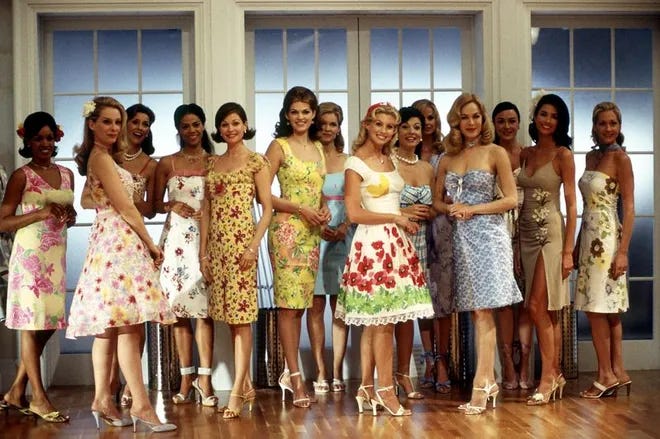When I was young during those early school years when being accepted was a means of survival, I was an outsider. I didn’t have the same dresses or snow boots, the same snacks packed into the same lunch box. I wore classic children’s clothing, designed to stand the test of time, much of it sewn by my mother. I can still hear the taunts walking to board the bus home because I had been sent to school wearing yellow rain boots. Yes, the classic ones that everyone adores today. In my small town circa early 1980s, it looked so foreign it was as if I had dropped down from outer space.
I grew up wanting what other people had. My formative years were spent trying to achieve belonging through a visual identity that matched those around me. I wanted to be accepted for my sameness. This reflex followed me into adulthood. I’ve been dazzled by images, by the things that other women have, still clinging on to the idea that I would be embraced and validated by others.
Philip and I are in the business of custom clothing, where in some cases everything down to the thread color can be personalized. I have freedom from what fashion dictates. The potential for complete individuality. Yet, I’ve felt powerless. I couldn’t make a decision. I have found myself seeking affirmation from what other people have worn.
Philip has had a grasp on his style since well before he had a driver’s license. He has strong opinions on what works for him and can easily buy and create new garments without much inner turmoil. His decisions aren’t in the form of an existential crisis, determining who he is and how he will show up in the world. He has never chased trends or what other people were wearing. I believe the longevity of his personal taste is a result of one thing: the school uniform.
The only uniform in my life was in ballet class. We strictly adhered to an ensemble of black leotard, pale pink tights and an elastic around the waist. I never felt longing or envy in ballet class. I was able to focus on my form and skill. Those were the only things that set you apart from the others. This narrow view allowed me to craft and shape myself without the distraction from the urge to belong.
I’ve had to retrain my mind to understand what I want for myself. I’ve often wondered if a childhood spent in a uniform would have permitted me the autonomy to develop my own taste as a form of rebellious independence? Would I have been more thoughtful about the person I was becoming if I could experiment outside from the daily, hourly, glare of other people’s judgement? Would I have spent my meager earnings on what I felt in my heart over what I analyzed in my head?





